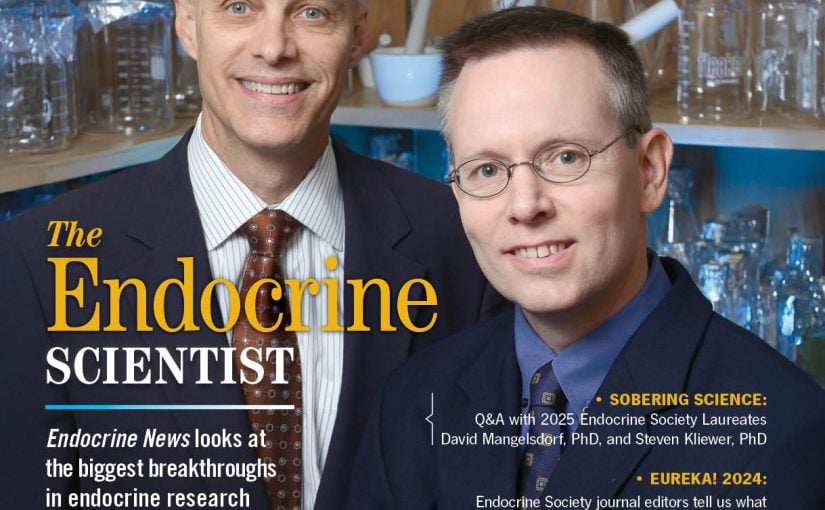Endocrine News talks to Márta Korbonits, MD, PhD, at the Queen Mary University of London about her research in seeking the mutations behind a familial adenoma.

Márta Korbonits, MD, PhD, professor of endocrinology at the Queen Mary University of London, is searching for the origins of this genetic disorder in hopes of helping physicians diagnose it faster and provide better care for patients. Among families with FIPA, one in five cases can be traced back to the gene called aryl hydrocarbon receptor interacting protein (AIP), but for the other 80 percent of families facing the disease, the cause is still unknown.
Korbonits spoke with Endocrine News about her research and the importance of finding FIPA before its effects become irreversible.
Endocrine News: What drew you to research in the field of endocrinology, and how did you choose your specific specialty?
I have wanted to be an endocrinologist since medical school. I’ve always been excited about the complexity of the pathways and the phenotypes patients are showing. I found the logic in endocrinology fascinating and I never looked back.
I’ve been working in translational endocrine science for 20-plus years, and have always been interested in the way a problem may start with a singular patient and end up informing you about the pathophysiology of a disease as well as the basic physiology of the body. When seeing patients, you discover novel aspects or functions that may be relevant not just for that disease, but for the regulation of that hormone. Informing clinical practice and physiology with this two-way kind of work is really exciting.
EN: What projects are you currently working on?
My main project at this point is working on familial pituitary adenomas. These involve patients who have a pituitary adenoma and also have a family history of this disease, although in some cases there is no known family history despite having genetic origin of the disease. One of the interesting aspects is why some people develop the disease while other family members having the same mutation are spared. We are also interested in the exact mechanism of how the mutations cause the disease.
There have been some really interesting findings regarding the phenotypes and their correlation to the exact gene mutation, or the genotype. Our study includes one of the largest groups of patients with this disease. We are combining clinical data with experimental results — identifying DNA mutation in patient samples and recreating these mutations in the lab to be able to do functional experiments.
EN: Among your projects, what accomplishments are you most proud of?
I am proud that we were able to help put this disease on the table in the United Kingdom and elsewhere by identifying quite a lot of patients with pituitary adenomas and screening their families for the disease as well. We were able to provide genetic advisement for patients and, via screening, sometimes discovered patients who did not even realize that they had the disease. If we can interfere earlier, we hopefully have a better chance to cure or successfully treat the pituitary adenoma. So I am glad we were able to help in this regard.
My most publicized work was a project involving a patient born 250 years ago in Northern Ireland. We identified the mutation in him and also identified families living with the same disease, and then turned to his relatives who are alive today. After that, we did a whole population screening of the community he was from and identified some additional cases. Hopefully this made [the community] aware of the disease so that it can be recognized sooner.
EN: If you had unlimited funding, how would you use it to enhance your laboratory and research?
I would screen patients whose clinical picture suggests that they have this particular disease and use the resources to analyze all of our existing samples. We have many additional samples that we would like to analyze.
EN: Where do you see your scientific work heading in the future? How do you hope to affect change with your projects?
I see identifying these new genes as the next step in this work. The other important step is to identify the mechanism of how the genes work and eventually develop new types of treatments and methods for diagnosing the disease sooner.
EN: Any final thoughts you would like to share with our readers?
If you have a patient or multiple patients with familial pituitary adenomas, please do not hesitate to contact me. FIPA is a relatively rare disease and lots of patients have been told in the past that it is not familial but, in some cases, it actually is. (Those working with patients that have been diagnosed with familial pituitary adenoma can get in touch with Korbonits at [email protected].)
—Mapes is a Washington D.C.-based freelance writer and a regular contributor to Endocrine News. She wrote about the human epigenome in the August issue.

